Virtual MSK Therapy: Life-Changing and Cost-Saving
Suffering from a musculoskeletal (MSK) condition can make it feel like you’re on the sidelines in your own life. This pain can take you away from the...
Connected Navigation Platform
Guiding to high-value care
Behavioral Health
Foster a mentally healthy workplace
EAP
Supporting holistic wellbeing
Virtual MSK Care
Reimagining musculoskeletal care
Virtual Primary Care
Powered by smart navigation
Surgery Centers of Excellence
Best-in-class surgical outcomes
Virtual Urgent Care
Immediate care, any hour of the day
Chronic Care
A new approach to chronic care
Integrations
Flexible to any strategy
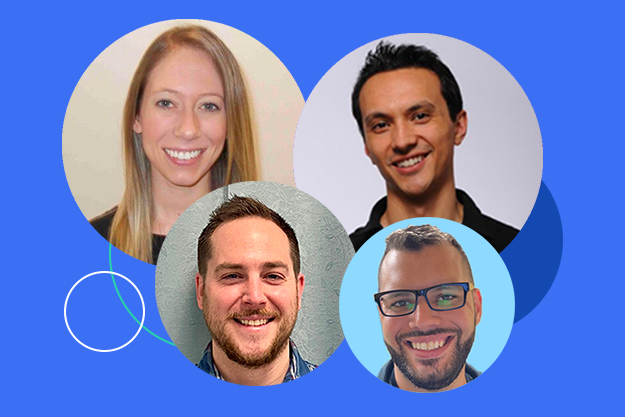
From physical discomfort to lost wages, reducing chronic back and joint pain can be overwhelming, frustrating, and expensive.
But with HealthJoy’s Virtual MSK Care program, finding an accessible alternative to pain management and physical care is now a reality. Created through the acquisition of Rekinetics — the only MSK program that applies neuroscience to exercise therapy — the latest addition to the HealthJoy app provides a low-cost, practical, and highly personalized program aimed at tackling a $213 billion health problem in the U.S.
Although the program is virtual, it’s by no means “impersonal.” Technology certainly enables us to connect our members to care, but it’s the humans behind the platform that make it all possible.
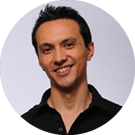 Jeremy Baber, MSPT, MSK Programming Manager
Jeremy Baber, MSPT, MSK Programming ManagerWhere are you currently based?
Lakeland, Fla.
What sparked your interest in physical therapy?
I think what first sparked my interest was that I wasn’t interested in working in a bank. I was in my senior year as a senior at University of Florida, and I was starting to do job fairs. And there was just something in my heart that told me “this is not what I’m supposed to be doing.” I knew someone that worked in healthcare, and they recommended that I check out physical therapy because they knew I loved exercise.
So I started volunteering at Shands Hospital System at University of Florida and seeing what these people did daily, and it seemed like something I’d like to do and felt like a natural fit. And the therapists were all very cool. Everybody was very interesting and outgoing and you could tell they loved what they did.
What’s your favorite thing about physical therapy?
It’s always different. When you deal with different people, it’s always a different experience. My first clinical instructor basically described it as “you’re a motivator, you’re a confidante, you’re a detective and you’re also an activities director.” And it’s absolutely true. You get to wear all these different hats and it’s your job not just to give them programming, but to keep that programming fresh and also unique to that person so that they stay engaged.
What’s your approach to programming?
I think about the brain first and the body second. Your brain is what generates your pain experience. Basically, pain is the projection of the brain onto the body. It’s not a projection of the body onto the brain. What I’ve come to realize is that the way most therapists were taught to prescribe exercise is based on the concept of hypertrophy, which is a concept rooted in bodybuilding. Hypertrophy training speaks the language of the muscles, but it doesn’t necessarily speak the language of the brain. The fastest way to affect pain in the musculoskeletal system is to change the brain.
That epiphany changed my whole thought process of how to approach exercise therapy because I knew that to be effective, I needed to prescribe exercise in a way that directly affects the brain. Our first three weeks of programming is designed to reboot the motor cortex to improve coordination and stability throughout the body, not just the injured area, so members will have a better response to local, corrective exercise.
My programming philosophy is driven by the physical goals of each member and prescribing exercises that relate back to those goals. Likewise, building a strong rapport with members is a hidden key to achieving better outcomes. We do that through regular video chats and weekly text check-ins, all through the HealthJoy app.
Do you have a favorite movement?
I love a good calf stretch on a slant board. The calf is a muscle that everyone takes for granted; it’s a real workhorse. It works hard all day, especially if your job requires standing and walking, and it rarely ever gets any attention from us. How often do any of us stop and say “Hey I’m going to stretch my calves today?” I keep a slant board next to my desk as a reminder. It feels so good to stretch your calves, it totally changes my day. I highly recommend stretching your calves regularly.
Why do you think MSK programs are so important today?
The obvious reason is that everyone in our country experiences pain at some point in their lives. And for most of those people, the pain will go away. But for others, the pain will persist and become chronic pain. Once the pain becomes chronic, there’s a good chance it’s going to enter the medical system because people aren’t going to want to live with pain. Take back pain, for example.
We spend the most money on back pain of any developed nation, year after year, and that dollar amount keeps rising, not dropping. But what if a person had access to early intervention? It’s very likely their pain issue would’ve been resolved rather than escalated. With a virtual MSK program, early intervention is now a reality and a necessity if we intend to stop the back pain epidemic in this country.
What is it about HealthJoy and HealthJoy’s Virtual MSK Care program that stands out to you?
The human element. I think what makes HealthJoy special are the people behind the platform. It’s the same thing in our MSK program. In other solutions, the member is engaging with their laptop or their phone and essentially hoping for the best outcome. Our coaches are the face of the program. They’re with the members at every step of their healing journey.
For context, when I worked at a clinic, I had 45 minutes to an hour to do an evaluation, perform treatment, and send the person home with an exercise program on their first visit. I could really only spend 15 minutes, tops, on the patient interview. It always felt like I was being rushed. At HealthJoy, in our first interview, we’re spending 40 minutes talking to members, getting to know them, educating them about their problem, and then crafting a personalized strategy. Having that extra time makes a huge difference.
Many competing MSK solutions don’t have a dedicated health coach; likewise, their programming is basically set in stone. Our MSK solution is nimble — our coaches can adjust programming on the fly and respond to member inquiries within 24 hours. For many competing MSK solutions out there, their members are flying solo, meaning they don’t have a real person guiding them.
At HealthJoy, the healing process is truly a team effort between the member, coach, and the technology.
What do you think is a common misconception when it comes to virtual MSK programs?
The idea that virtual therapy is somehow less effective than an in-person experience. And while there are certain inherent limitations with virtual therapy, if you talk to physical therapists who have practiced for a long time, they’ll tell you that the ultimate driver of success with physical therapy comes down to home exercise adherence.
This digital platform allows coaches to track member adherence in real-time and more accurately than is possible in a live setting. That’s because you have no idea what someone is doing once they walk out the door of a clinic. I honestly have a better idea of who’s going to get better now than I ever did working in a physical location.
What are you happiest doing when you’re not working?
Spending time in nature with my wife and two children. Recently I purchased adult-size Razor scooters for myself and my wife to match the kids. Now that everybody has a scooter, we go on “scooter safaris” around our neighborhood and local parks.
What would be your personal motto?
“An ounce of prevention is worth a pound of cure.”

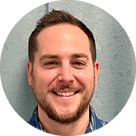 Liam Bryant, PT, DPT
Liam Bryant, PT, DPTWhere are you currently based?
Framingham, Mass.
What sparked your interest in physical therapy?
I initially got into the field similar to how many of my colleagues do: through my own physical injury experience. After my ACL was repaired in college, I received guidance and help from some professionals. But I really took it upon myself to learn from the process. I really enjoyed the progress — from being completely unable to play and having a difficult time walking to eventually making my way back to the field. I thought, “this was fun for me, I’d love to do this for other people.”
Once I got into school, everything just kind of blossomed and I realized there were a lot of different avenues of physical therapy that I could provide.
What’s your favorite thing about physical therapy?
My favorite thing about PT is building and establishing relationships with the patients. Every patient has a different story.
What’s your approach to programming?
My approach is primarily based on meeting the individual where they are, and building a foundation from there. To keep members motivated, I have to find out what drives them. The goals can vary from sitting to standing or someone wanting to run six miles. And then I use those motivators to keep their interest in the program and the process. I also like to remind members that the process is never a linear one and that they’re not alone.
I also like to continually learn from other colleagues because it helps me become a more well-rounded therapist.
Do you have a favorite movement?
My favorite is the single-leg Romanian deadlift exercise or a variation of the deadlift. It strengthens the posterior chain but also gets the member working on both their balance as well as coordination. It’s an all-encompassing movement.
Why do you think MSK programs are so important today?
Statistically, when you look at the types of injuries that people sustain in their everyday lives, they’re all predominantly MSK-related. They’re constantly driving the prices of healthcare up rather than getting realistically addressed through other avenues like the HealthJoy MSK program.
What is it about HealthJoy and HealthJoy’s Virtual MSK Care program that stands out to you?
Not everybody has the availability to commit to in-person or virtual appointments regularly. It’s going to allow members to do the exercises at their own pace and at their own speed and the coach on their terms. Some people might need a little extra push from the coach and the coach is going to be able to pick up on that and step in and be the primary motivator for the individual.
And some people might not want that. Jeremy has created a different approach in that it works on retraining the neuromuscular system first, whereas traditional approaches to therapy don’t typically spend a great deal of time on that step, or will even skip it.
What do you think is a common misconception when it comes to virtual MSK programs?
I’d say one misconception would be that they’re less effective compared to an in-person treatment program. In my experience with telemedicine throughout the pandemic, a large range of individuals got better without any hands-on treatment or any in-person visits.
Through the HealthJoy program, we do a good job of understanding what members might need — whether that’s directing them to other avenues of medical treatment or intervention — so that we know that they’re appropriate for our program, which unfortunately can sometimes get missed through telemedicine visits.
What are you happiest doing when you’re not working?
Enjoying the outdoors, playing soccer, and watching Liverpool FC. I’m a big craft beer and culinary nerd. I really enjoy good food, good drinks, and of course, good company.
What would be your personal motto?
“If it doesn’t challenge you, it doesn’t change you.”
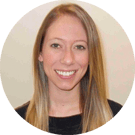 Amanda Winters, PT, DPT
Amanda Winters, PT, DPTWhere are you currently based?
Chicago.
What sparked your interest in physical therapy?
In high school, after I tore my ACL during cheerleading, I had physical therapy, and that first gave me an idea about the field. And even at a young age, I knew I was interested in the sciences — biology, health, anatomy.
When I went to college, I was initially pre-med, but then the more I thought about it, I really liked how I got to establish a relationship with my therapist and they got to see me improve before their eyes. And that’s what made me pursue PT instead of medicine. I like the ability to spend time with my patients, learn about them, and get to see all of the improvements and benefits of my work.
What’s your favorite thing about physical therapy?
Spending time with patients and seeing their improvements definitely rank up there, along with being able to establish a relationship. I also enjoy being active and on my feet.
What’s your approach to programming?
Overall, you want to be motivating. I’m definitely more optimistic and willing to try various movements and if we have to stop, that’s completely fine. I try to push people a little outside their comfort zone if they are a little more apprehensive. If a patient seems OK in their recovery, ready to progress on, and excited to be there, then I’m 100% ready to dive in and get them going. I think it all depends on the patient.
Do you have a favorite movement?
One strengthening exercise I really like is called “the clamshell.” It targets your hips and buttocks. If you do the exercise right, you’ll feel the burn right away. The gluteus medius muscle, on the side of the hip, is very important but not really targeted in a lot of strength training or exercise classes.
Why do you think MSK programs are so important today?
Musculoskeletal health and treatment are important because you’re talking about your body. Yes, we have joint replacements and all of that, but don’t you want to build the longevity to keep you as mobile as you can be? I think just making sure people have good knowledge about their bodies is going to help us as we age. We’re living longer and longer lives, retirement’s getting pushed back. Everything’s progressing. So we need to make sure our bodies can fulfill all the work we need to do and keep us mobile as we’re living into our 70s, 80s, 90s.
And on top of that, you also have obesity and the pandemic. It’s putting a lot of strain on people’s joints and there are a lot of things people can do — and don’t realize they can do — to combat that before turning to surgery.
What is it about HealthJoy and HealthJoy’s Virtual MSK Care program that stands out to you?
Accessibility is super important. It’s not as easy to go to a weekly appointment at PT. People really like flexibility and that’s what the HealthJoy Virtual MSK Care program provides. If you’re traveling, you can still keep up with your exercises or your strength and conditioning without having to regress or have a pause in your treatment. Also a big thing: it helps to provide excellent care to anyone living in rural areas or people that don’t have access to the same top-notch care as someone in a large metropolitan city. Increasing accessibility will only help target more people who need it.
I think it’s definitely part of the future. There are things that will still require hands-on treatment and that’s the limitation of virtual medicine. But there’s a large portion of injuries and MSK issues that don’t need that hands-on treatment and this would be an excellent option for those people. I think it’ll be part of the healthcare landscape for people who need musculoskeletal care going forward. It’s a good adjunct to current practices.
What do you think is a common misconception when it comes to virtual MSK programs?
I think a big misconception is that people might think they’re only a number, and that the program isn’t specific to them. Although we have set exercises, as coaches, we modify them based on a specific client; we adjust things as needed. Members aren’t just given a program to follow on their own. This program is very much tailored to the individual.
What are you happiest doing when you’re not working?
I’m happiest being outside. Whether that’s walking my dog, sitting by the lake, and looking at the water, anytime it’s sunny, I’m outside. I just try to soak up the sun. In the winter, I do hot yoga.
What would be your personal motto?
“You get what you give.”

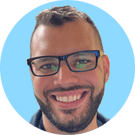 Mike Vari, ATC
Mike Vari, ATCWhere are you currently based?
Oak Lawn, Ill.
What sparked your interest in physical therapy/athletic training?
When I was in high school, I tore a ligament in my wrist and was no longer able to play football. So I stayed with the team and I helped out with the equipment manager and spent some time around the athletic trainer at the high school for two years. After that, I just wanted to help people get better.
What’s your favorite thing about physical therapy/athletic training?
In my current setting, I work a lot with high school athletes. I love engaging with them and helping them get back to their sport. For members, it’s a similar experience but focused on getting them back to normal activities.
What’s your approach to programming?
Education is a key element. Getting members to understand what’s going on with their bodies, the potential issues that are occurring, and how we can get them back to doing what they want to do. I also think it’s about empowering people to get better no matter where they are. The beauty of an MSK program like this is that we’re removing the physical obstacle of travel, and providing members with tools they can use at their own pace.
To keep people motivated, I like to remind them of their goals — why they’re in the program, what brought them to the program, and what they may want to get back to.
Do you have a favorite movement?
I think everyone can benefit from trying to sit with better posture. With everyone working or attending school from home, I think a lot of us are slouching over a device of some kind. Whether it’s a few minutes every hour, or maybe a couple of times throughout the day, I think everyone should try to sit upright. It’s important to adjust out of that slouched position so we can help make our bodies feel better.
Why do you think MSK programs are so important today?
These days, I think people are avoiding going to doctors and exercising. Physical activity has dropped down tremendously. An MSK program empowers people to take control of their healing journey, and have peace of mind knowing that they have a healthcare professional to guide them through it all.
What is it about HealthJoy and HealthJoy’s Virtual MSK Care program that stands out to you?
The personal touch within our program. All guidance comes from the coach. We’re people, not computers. We’re here to communicate and help.
What do you think is a common misconception when it comes to virtual MSK programs?
That it’s a general exercise program and not guided by a professional; that it’s just an app with a list of exercises. What makes us stand out is how we stay with the clients and help them develop healthy habits. HealthJoy’s MSK solution provides a personal touch.
What are you happiest doing when you’re not working?
I’d say yard work and just being outside. My 4-year-old daughter likes to explore in the yard. If I could be outside for at least six hours, and spend time with my daughter, it’d be a good day.
What would be your personal motto?
“Always look for the small wins.”
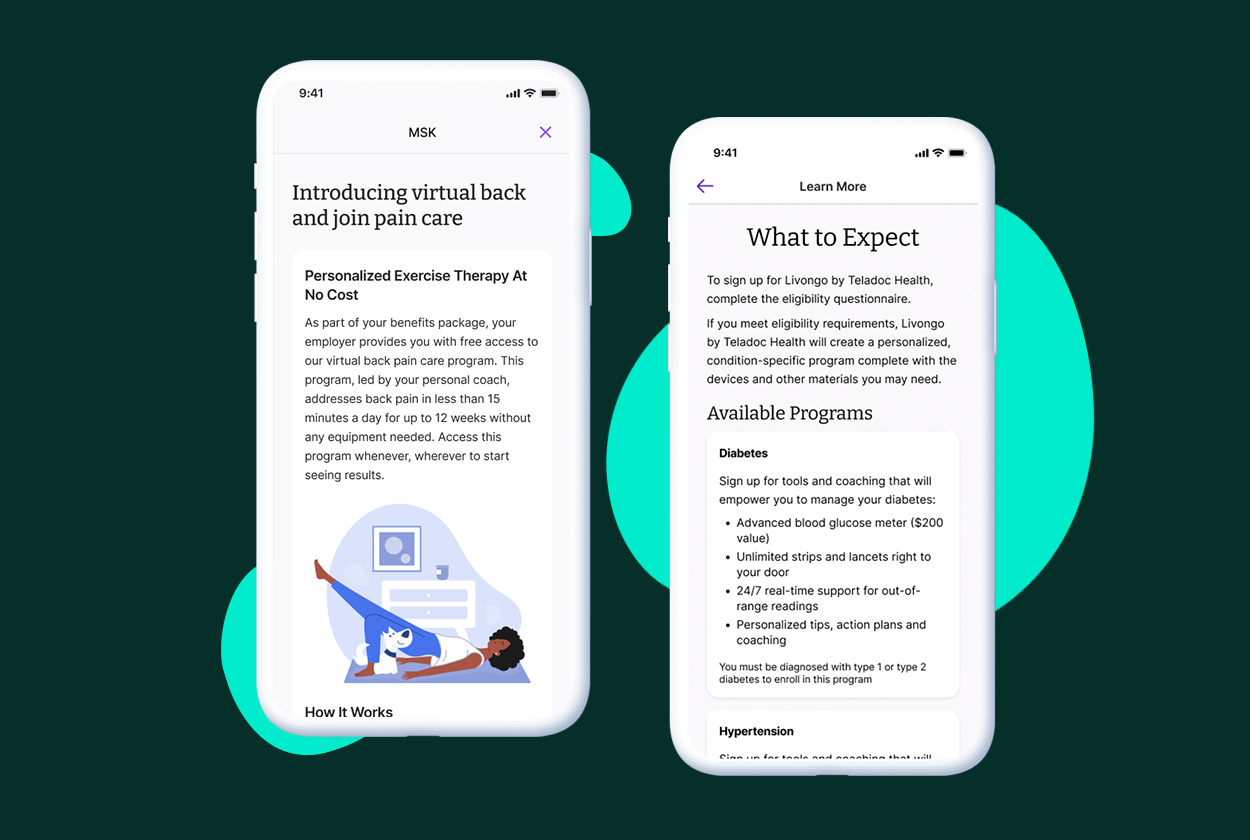
Suffering from a musculoskeletal (MSK) condition can make it feel like you’re on the sidelines in your own life. This pain can take you away from the...
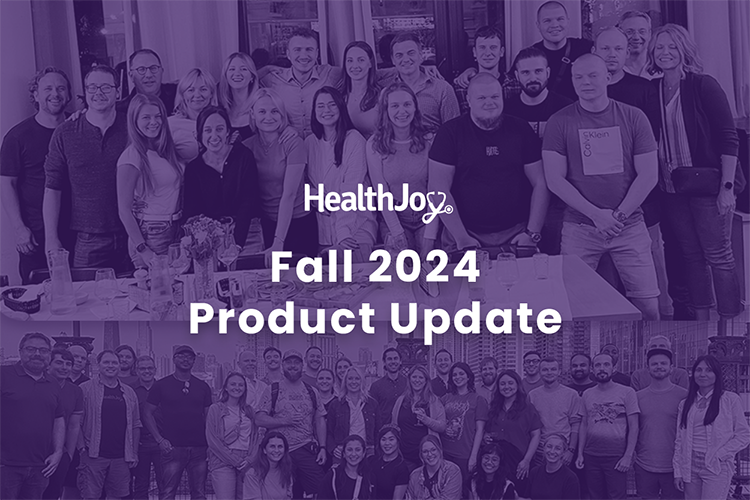
As always, I’m excited to share some of HealthJoy’s latest product updates and enhancements, but I’m particularly excited about the timing of this...

Medical bills have the unsettling power to derail our lives. You probably know the feeling: as soon as you pull the envelope from the mailbox and...